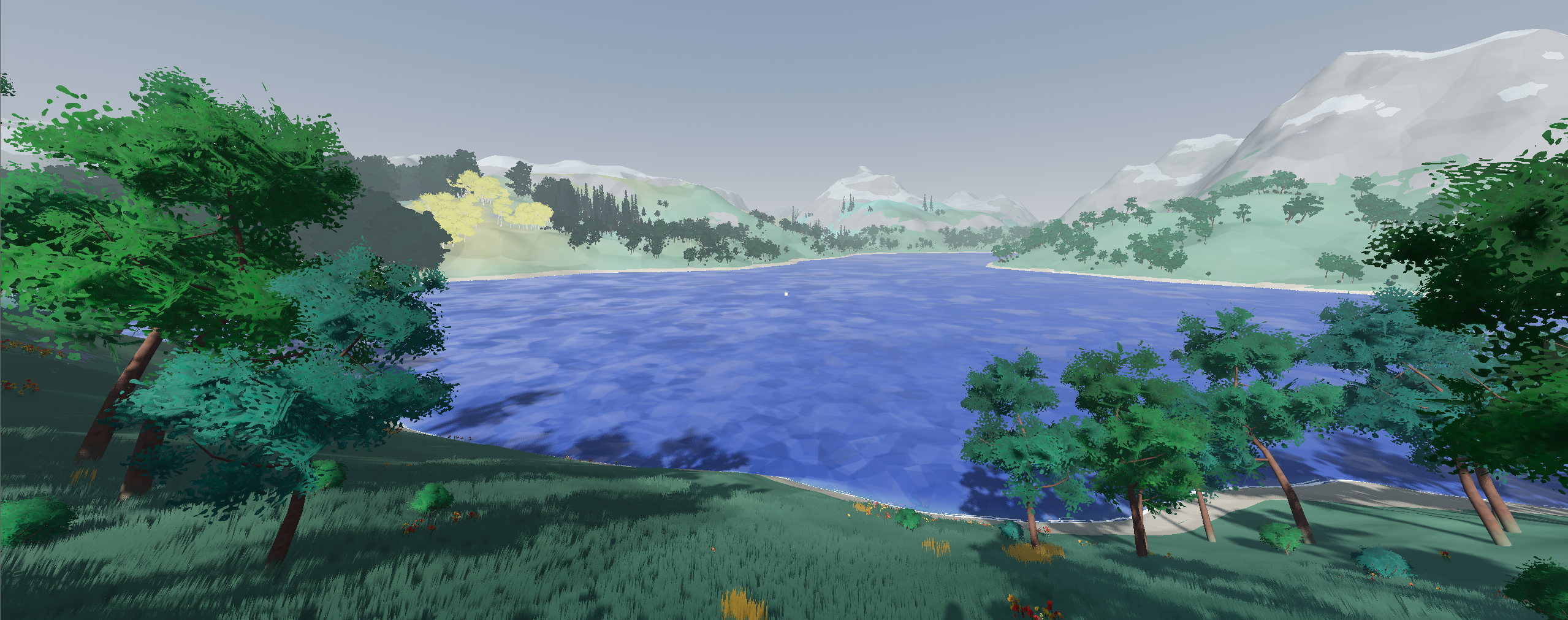These are some of my projects I have worked on over the years.
Procedurally Generating Voxel Worlds using Wave Function Collapse
Hello everyone,
I recently introduced my voxel playground, a ray-traced voxel engine made with cellular automata in mind. However, so far the voxel map itself is quite barren. So I set out to populate the world in interesting ways. For a previous project, I had used Wave Function Collapse, and I thought it would be fun to try to apply it to full 3D world generation.
I have implemented two distinct versions of the algorithm.
read moreRecreating the water physics from Mario Kart World
I have been playing the new Mario Kart World game recently. During the water sections, I noticed that bob-ombs could cause large waves to appear that interact with the players. I have wanted to work on a technical art project for a while now, so I decided to implement a version of their interactive ocean system for myself. Additionally, I implemented many other effects featured in the latest Mario Kart installment, such as item boxes, boost panels and tire tracks in the sand.
read moreRay-Marched Voxel Simulation
I have created a new voxel engine that is designed to handle fully dynamic scenes. Inspired by classic falling sand games, my aim was to create a system that can handle many unique interactions between different materials. The world is rendered using direct voxel volume rendering, such that changes to the world are immediately reflected on screen. As we are updating upwards of hundreds of millions of voxels, many times per second, the entire simulation is run on the GPU using compute shaders.
read moreRay Marching Fractals that move to Music
I wanted to combine my love for computer graphics and music, by creating a music video generator. The idea is to design a dynamic renderer that enables me to quickly iterate on some neat looking visuals that move to music playing in the background. I realized that one of the best options for this is ray marching, as we can apply many fun tricks to quickly create some sophisticated looking scenes with a bit of mathematics.
read moreDestructible Large-Scale Voxel Planets using Surface Nets
A while back, I showed my first implementation of a Smooth Voxel Terrain. While I was reasonably satisfied, it left a lot to be desired. The terrain suffered from some artifacts and performance issues, and because it was programmed in C# it could not be easily integrated into other projects. For these reasons, I decided to start working on a new implementation from scratch in C++, addressing many of these problems.
read morePath Tracing
Update: I’m thrilled to share that this project has been featured in the community section of the April 2025 edition of the official Godot newsletter!
Ray and path tracing is becoming more and more popular in real-time graphics. Many modern games release with ray traced reflections, and some games even attempt to have full path traced global illumination, essentially modelling light like in real-life. However, Godot lacks a good path tracing solution.
read moreTraining Evolutionary Agents
Last time, I showcased some basics of Evolutionary Algorithms, which can elegantly solve black box problems. Today I extend it to train agents using reinforcement learning and neural networks. If you want to check it out for yourself, feel free to look at the source code.
Reinforcement learning is a branch of machine learning where agents aim to learn some behavior that maximizes the reward obtained in some environment by taking the right actions given a particular state.
read moreSimulating Digital Evolution
Many problems are difficult to solve using classic algorithms. This is where state of the art artificial intelligence techniques come into play. While everyone talks about large language models and diffusers nowadays, I think a different branch called evolutionary algorithms is much more interesting. Originally inspired by biological evolution, this branch of artificial intelligence aims to solve problems using elegant concepts.
While many types of evolutionary algorithms exist, they almost all share the notion of using a population to converge to an optimal solution.
read moreSimulating Forest Fires
Inspired by the Scintilla paper, I wanted to create interesting forest fire simulations on my procedurally generated Smooth Voxel Terrain.
To achieve it, I came up with the following requirements:
We need to come up with a system to modify the grass on the terrain. It needs to be able to visually indicate that it has been burnt, and in that case, it shouldn’t be able to be burnt again.
read morePopulation of a Large-Scale Terrain
Previously I introduced a Large-Scale Smooth Voxel Terrain While impressive in scale, it lacked visual variety and complexity. One way to mitigate this is by introducing natural objects such as grass and trees.
Many voxel engines and games such as minecraft tackle this by incorporating these features into voxels too, but this can both make asset creation more difficult, and increase the demands put on our voxel octree. Instead, I chose to implement more traditional methods of distributing objects on the terrain surface, often seen in games in combination with heightmap terrains.
read more








